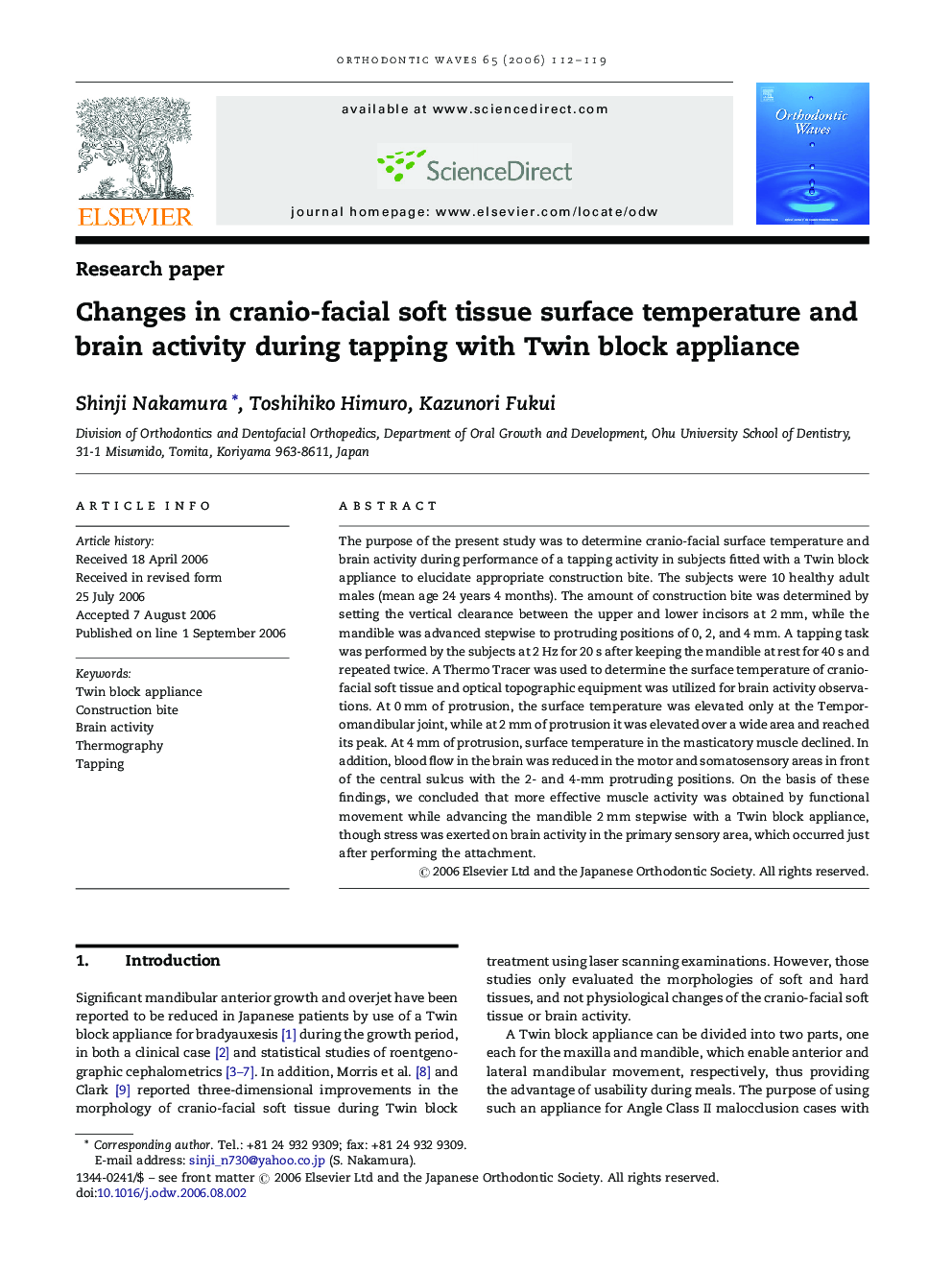| Article ID | Journal | Published Year | Pages | File Type |
|---|---|---|---|---|
| 3170639 | Orthodontic Waves | 2006 | 8 Pages |
The purpose of the present study was to determine cranio-facial surface temperature and brain activity during performance of a tapping activity in subjects fitted with a Twin block appliance to elucidate appropriate construction bite. The subjects were 10 healthy adult males (mean age 24 years 4 months). The amount of construction bite was determined by setting the vertical clearance between the upper and lower incisors at 2 mm, while the mandible was advanced stepwise to protruding positions of 0, 2, and 4 mm. A tapping task was performed by the subjects at 2 Hz for 20 s after keeping the mandible at rest for 40 s and repeated twice. A Thermo Tracer was used to determine the surface temperature of cranio-facial soft tissue and optical topographic equipment was utilized for brain activity observations. At 0 mm of protrusion, the surface temperature was elevated only at the Temporomandibular joint, while at 2 mm of protrusion it was elevated over a wide area and reached its peak. At 4 mm of protrusion, surface temperature in the masticatory muscle declined. In addition, blood flow in the brain was reduced in the motor and somatosensory areas in front of the central sulcus with the 2- and 4-mm protruding positions. On the basis of these findings, we concluded that more effective muscle activity was obtained by functional movement while advancing the mandible 2 mm stepwise with a Twin block appliance, though stress was exerted on brain activity in the primary sensory area, which occurred just after performing the attachment.
